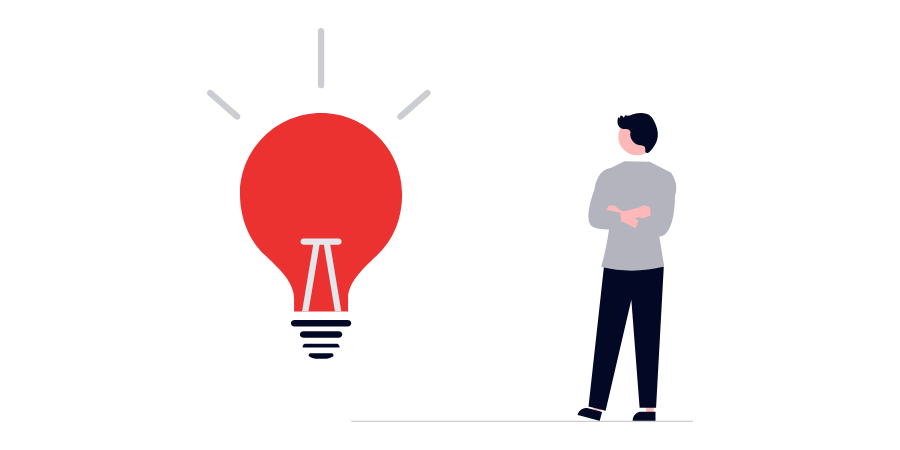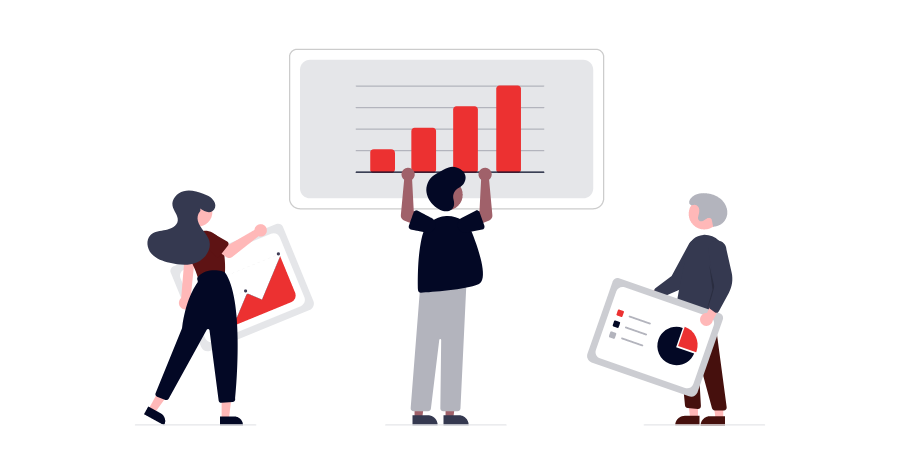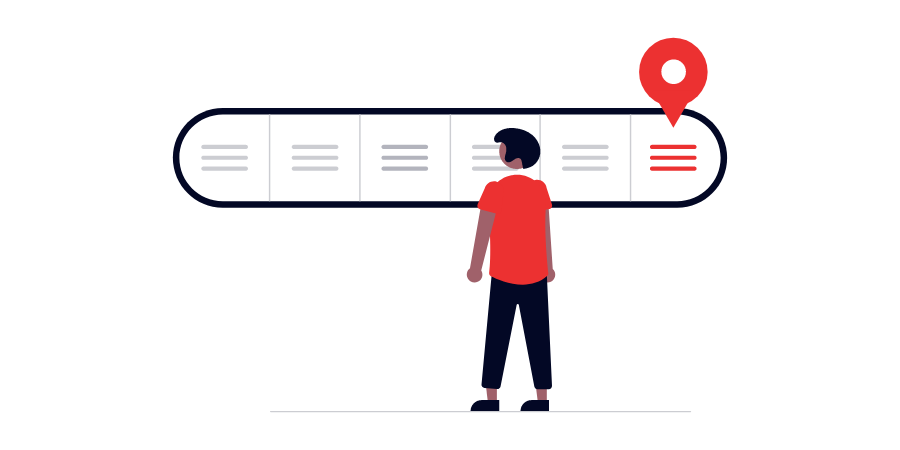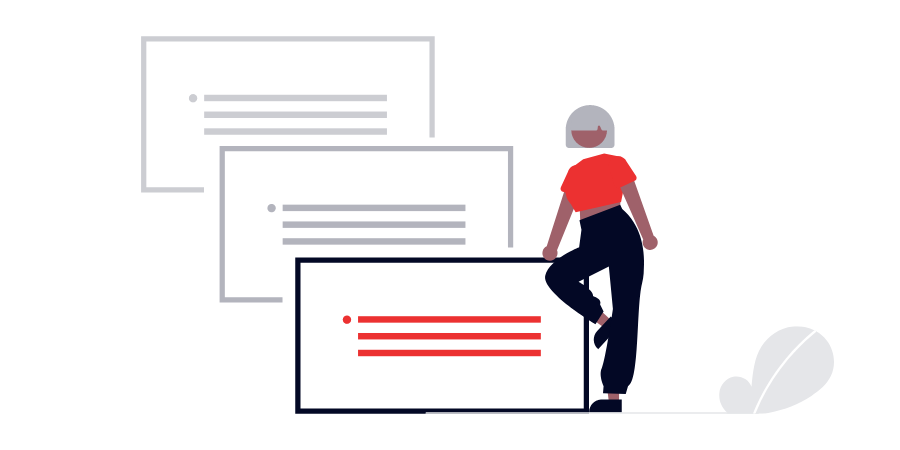![]()
Brought to you by CustomerIQ, the AI platform to help teams aggregate, search, and synthesize customer feedback. CustomerIQ aligns teams with insights from channels like CRM notes, surveys, support tickets, and call transcripts, to help drive retention, product improvements, and revenue. Align every team with the needs of your customer and deliver an exceptional experience with one powerful AI platform. Learn more here.
I started my first company out of a small coworking space in downtown Raleigh, NC called HQ Raleigh. This was before the WeWork craze. Even slightly before it was cool to be a founder. The building was full of small startups, all with different pitches and plans to build the future. We were in the far back corner, tucked away from the main common area. On the opposite side of the building, through the common area, up the steps, in a small office was a startup with a short, latin name, building software for a persona whose job responsibilities alluded most of us young entrepreneurs.
Pendo always seemed to know what they were doing. But at the time, none of us could explain what it was. Product management was still a relatively new concept. We weren’t sure if Pendo was selling software to engineers or to marketers. Of course, it was neither. We weren’t sure if it was an analytics tool or a product guide. Of course, it was both. Pendo set out to build a platform for product managers. Out the gate they built what was essentially two products stitched together. This confused most early investors but made sense to anyone who had managed product.
And it worked.
Suddenly Pendo found their stride. Soon after focusing on the mid-market they found product-market fit. In 2015 they announced their $11 million Series A round led by Battery Ventures. Their little office got crowded – full of smart, hard-working people. Then they moved across the street. Then they moved a block over to their own building. Then they moved to a new, bigger building. Then they put their name on that building. And now Pendo’s signature pink brand highlights a growing Raleigh skyline.
The quintessential startup story.
Pendo grew to over 800 employees between 2014 and 2024, with a valuation of $2.6B as of 2021.
I was so excited to learn that Mike Belsito, cofounder at Product Collective and our collaborators here at Behind the Product, sat down with Todd to hear the origin story.
Here’s what we learned:
- Pendo’s origin story
- Building the early team
- How Pendo got their first customers
- How having young families built a culture of resilience
- Feeling product-market fit
- Building a culture at scale
- The future of Pendo
Please enjoy Mike Belsito’s conversation with Todd Olson, CEO at Pendo.
What sparked the idea for Pendo?

The idea came from my past experiences in my career. Prior to starting Pendo, I was the head of product at a company called Rally Software. Rally Software was one of these probably early SaaS solutions or early cloud-based solutions focusing on agile project management. We had a homegrown system for product analytics that required developers to instrument things. We had a data warehouse, we had Tableau on top of it. And I constantly wanted more answers out of this system and every time I asked for more answers from the system, it was met with, “Well that’ll take more engineering time,” or “We need to instrument this,” or, “Oh, we need to bring in this data to it.” So it felt like an expensive endeavor. The last thing you want to do as a head of product is put your engineers on some internal system.
So that was one challenge I was experiencing. The other big challenge I was experiencing was, I’ll basically describe it as how do you enable customers in a modern world? What I saw was as companies were adopting more and more agile development methodologies, they were shipping features more swiftly. It meant that we evolved as an industry from this place where we used to do big releases and we used to do big releases because we used to ship physical media. When you ship a CD, you’re not going to do it very often. I remember when I was cleaning out my garage recently, I found stacks of Microsoft CDs I used to get when they would do a release. In college, you’d get these very inexpensive sets of Microsoft software and then you’re shipping once a year, twice a year, whatever, it was going to be a big event.
But when you’re shipping a handful of features a week, you need to evolve the way you think about enablement. One of our customers had rolled out a big feature release and one of these customers called and yelled at me as the head of product, saying, “Hey, you didn’t enable my team.” Well, it’s like, look, we did a webinar, you didn’t come to the webinar. They’re like, “We’re not going to come to all your webinars. That’s madness.” So we started experimenting at Rally with in-product messages, and the idea was highlighting new features and trying to draw attention to areas of the product that people weren’t using. But the challenge was that we had no idea whether people were seeing the messages, whether they were working or not. If I call something new and you logged in this week and one of your peers logs in six months from now, is that still new?
It’s a great question. It’s new to them maybe. So I kind of saw this as another challenge and part of my vision for Pendo was: how do we create a platform that handles all of this? One, it captures the data you need to capture in order to have good insights into how people are using your product, because that just informs a lot of product management questions. Everything from “Is this feature adding value? Should we invest more here?” to even things like pricing and packaging combined with “How do we message users and drive engagement?” The ultimate vision was we want more people to use more of our software, very simply because the idea of more people using more parts of our software, that’s good for them, that’s good for us, it’ll drive growth. So that’s kind of the ultimate backdrop of how we started.
How did you build the founding team?

I mean I think with any startup, I am a fan of a founding or co-founding team. I mean, there are some stories of people doing it by themselves, but it’s always nice when you have someone drive accountability amongst yourselves. I think it is super valuable. I had worked with Eric Boduch right out of college at Carnegie Mellon. We started our first company together. But we sort of went our separate ways for years, not necessarily by design, but that’s kind of what happens. I took a job, he took a job, you diverge. And we’d always said if we had an opportunity, if our lives somehow aligned, we would love to work together again. So the good news, the world was aligning.
So that was one. Rahul (Jain) was another one who I had worked together with, he said he would love to do something if I was starting something. And the last piece of it was our CTO, Erik Troan, who a bunch of people had said we should meet. I was just always so busy and he was always so busy we had never met. But in the months leading up to Pendo, I had some time and I was talking to someone who said, “You should really meet this person for once.” So I met with him. I think he was a key part of that original founding team because you think about our backend and how much data we process and just handling the engineering side of the business. He was our CTO, just a key force. So we kind of formed this founding team and then we went out to talk and raise capital.
I think we knew from day one that this was a capital raise type of company. I think there are some companies that are very suited for bootstrapping and some probably more suited to go out and raise capital. And I think based on our backgrounds, based on the opportunity, and I think what I would describe as the nearness of the opportunity, time to market speed really mattered here. Whereas some things that are very early stage probably don’t matter as much. You can probably take a few years to incubate an idea. But given the way the world was, we felt like we had to do it now. We tried to raise seed funding for a while. We met with a lot of seed firms. I spent a lot of time in the Bay Area. I think given that we are a North Carolina based or headquartered company, I think we struggled to find funding in the Bay Area.
I think I can use the word “struggle.” We didn’t get it. So I guess my definition of that would be struggling and I tried hard and even with track records, even with good backgrounds as entrepreneurs, it was hard. Back then, that would be 2013, finally we got commitments from a DC based venture capital seed fund and some New York based funds. We put together roughly a million, maybe a million and a quarter dollars to get started. That sort of was the catalyst to get things going. Of course, while we were raising capital, Eric Tron and I were also building the initial mechanisms for what Pendo is today. So he was building the core of the backend. I really worked a lot on the front end and everything from the data capture and everything else. So I think he and I were iterating in the background, sort of just building things out. So we had a product to actually show and start potentially onboarding customers onto.
How long did it take to raise that round of funding?

The process basically took the entire fall of 2013. So we started in earnest around early September through December 31st. We actually closed the deal on Christmas Eve, so on December 24th we were trying to get signatures and wires from VCs on Christmas Eve, which was not the easiest thing to do. But we got it all wrapped up and got the money in the bank. And then we had also, once we had commitments and term sheets, I think starting in early December we started recruiting some of that founding team. So we brought in our first product manager, Shannon Bauman, formerly of Google and some other places, as a good early stage PM, and then two engineers that we had worked with because they were very known quantities, great engineers, scrappy, loved being at a startup. So that was kind of the early days. And then starting January 1st, 2014, we were in a coworking space going and basically building all day long in this room, honestly a room not much bigger than the room I’m in now, but all of us were in there and those were fun days.
What were you looking for in your early team? How did you all go to market?
In the early days, we were hiring people that, generally speaking, we knew. We wanted very low risk hires in the early days. Although like Shannon for example, I had never worked with him before. So that was one where we took maybe a bit of a risk. But I think he had shown a proclivity towards startups after Google that really attracted us to him. And generally speaking, you want a startup oriented individual in those early days – someone who is comfortable working with a lot of uncertainty, arguably a lot of risk. And interestingly, everyone we hired actually had families. These were people that had families, they had experience, they were mature, but they were also willing to take calculated risks. And honestly, it all worked out. So in hindsight, they looked like smart hires, but at the time it was super risky.
You want someone that is also willing to speak up and do what’s necessary and not have an attitude of “this isn’t my job” or whatever. There were no set jobs. We were all sort of doing everything. And I personally wrote code for the first eight to ten months in the company’s history. I haven’t written as much since then. Eric, our CTO, still writes code today, but those were wild days. We were sitting back-to-back in a room in front of our computers, iterating on problems. We would turn around and say, “Well, how are we going to solve this problem?” We would put together something and it was like, “Oh, we don’t like that. It doesn’t look good.” And there was a lot of conflict, I think healthy conflict, but if we didn’t like certain things, there was this classic model of forming, storming, norming, and performing. Oh my gosh, we were storming in those early days.
It was a brand new team working together, which is very natural, but it’s different than when it’s like six people in a tight room together and you’re storming. There’s no real place to go and hide and be in your own thoughts. So yeah, it was really fun days. And I think one of the hallmarks of the team is we are big on shipping, we’re still big on shipping. It’s one of my classic mantras. If you know me as a product person, I’m very aggressive on shipping software, so it is kind of who I am. And we got our first version of the product out in April of that year, so only basically three full months after going full at it, which was really fast. Of course, it was very light initially. But we started onboarding beta customers in April, which again was very early.
And then my job sort of split between coding and soliciting, finding and onboarding beta customers. It was super easy to commit them initially. It was like, “Hey, we just want you to try this thing and tell us if you get value out of it.”
And we knew early on that just installing Pendo was an ask – you had to take this JavaScript snippet, you had to get a developer to put it into your product. That was an ask. So we didn’t want to ask for money because we figured that ask was large enough out of the gate, given that we weren’t a known quantity.
Then once we started getting beta customers, we could start watching and interviewing and sort of obsessing over those beta customers – how were they using it? What were they using? What did they dislike? Was it growing? How sticky was it? So at that point, it really shifted to what were we learning from these folks and how could we get them hooked on the software, which is kind of what you want. You want to get people hooked and that will start to get you some measures of product market fit.
One thing you said earlier stood out to me – those early employees on your team, many of them had families. Do you feel like that played any sort of role in your early success?

I absolutely think having a family played a role. I think that having a family was kind of a core part of our identity in the early days. We have a bunch of core values. One of the core values is respect lives outside of work. And that’s the third articulation of this concept. The first one was something like “all work and no play is no fun at all,” or something to that effect. And I think we knew that we had to have a culture that balanced both work and life, but there was still a focus on work. We weren’t just sitting around playing ping pong. And I know that some people say that startup life is about working 20 hours straight or what have you. And honestly, I did that in my first startup when I had no family and no kids.
I basically lived at the office and that was honestly probably fine for those days, but it wasn’t fine for Pendo. A lot of us had to pick up our kids from school or from after-school activities because I paid myself so little money at Pendo, things like using my wife’s insurance and so on. So she was working. That meant I had to be more of a parent and be responsible, and I wanted to see my kids as well. So we would take time out for dinner and then I would get back on the computer and work until midnight very often. I started building, I think, an early cadence that I live by now, a little differently since I have more kids, et cetera. But generally speaking, I reserve time for dinner with the family almost every night if I don’t have another work dinner. And then I do sometimes work after dinner. And I think that cadence really helped.
We also had a more mature startup environment, and it is funny because we were in a co-working space surrounded by a lot of startups that weren’t mature. And that’s okay – I mean I think they were just earlier in their career, but I think we had a focus that was grounded in the fact that all of us had something more to gain or to lose.
When did you feel product-market fit?

I don’t know if there’s a moment I actually felt product-market fit, but I would say I really started to recognize it around late 2014 or maybe 2015. It probably took a while to get there. I distinctly remember reading Brad Feld’s blog post about product-market fit every single week because I loved how he described the phenomenon of people coming at us, wanting our product. That blog post really resonated with what I hoped to feel, and over time, it did start to happen at Pendo.
Then, there was this dinner with a VC in 2021, which is pretty recent, and by then everyone would’ve agreed that Pendo had achieved product-market fit. At that dinner, I described how our young reps, who were around 24, 25 years old, were closing deals in a single call with inbound prospects. Our board member affirmed it saying, “Todd, that’s just really good product-market fit!” It was like a lightbulb moment – a reminder of what we had accomplished.
If we go back to the early signs back in 2014, we started to convert at a healthier clip, which was another sign. Then during our Series A, we pitched to someone from Battery Ventures’ portfolio who challenged us to build a feature for ingesting qualitative feedback. They promised a large deal if we could build it, and we did, rapidly, which was a huge indication that we had something valuable.
However, another defining pivot was in the strategy regarding our target market. Initially, we tried a PLG approach focused on small startups around us in a coworking space, which honestly, wasn’t working out great. Then, Shannon, an early product manager, pushed us to target the upper mid-market and larger enterprises. This shift, paired with a mindset change to embrace active selling, began to ease the process and directly impacted our success. Moreover, in 2016, I spontaneously decided to increase the price of our lowest package by tenfold, which also proved to be a pivotal point for Pendo.
Eventually, as the company scaled, we had to beef up our go-to-market strategies and training. We encountered new challenges like ensuring non-product heads could sell our product effectively. By continually addressing these issues, we strengthened our market position and refined our product-market fit. And as scary as it was at times, like when we decided to hike our prices without a solid data-backed business case, following our gut paid off significantly, shaping Pendo’s growth trajectory and solidifying our place in the market.
What have been the biggest challenges maintaining that culture as you’ve grown?
Yeah, culture’s a huge part of the company, and it has been since the early days. From January 4th, 2014, when we first gathered to define our core values—those values have slightly evolved in wording, but the essence remains: a focus on work-life balance, recognizing that we all have lives outside work which we value deeply. Over the years, we’ve maintained a strong action orientation, where bias to act and a disdain for unnecessary bureaucracy drive us to be fast and efficient. Let’s just get things done, man, let’s go build something.
As we’ve grown, adapting our values while keeping their core intact has been a key challenge but also a strength. We’ve implemented systems like the poker chip recognition system that began around 2016 or 2017, which scaled into a digital format over the years. This system allows us to continuously recognize individuals who exemplify our values, such as collaboration, helpfulness, and a shared commitment to winning together.
However, aligning everyone with these values as we scale has its complexities. For instance, the value we formerly articulated as ‘brutal honesty’ had to be reconceived not because the core value changed but because the wording led to misunderstandings. We’ve learned it’s not just about having values but living them authentically and ensuring they are clearly communicated.
Maintaining our culture isn’t about sticking rigidly to an aspirational script but rather being honest about who we are and making sure new hires understand this. It’s about embodying these values in our daily operations and using them as a filter to ensure alignment within the team. It’s a continuous process of reflection, feedback, and adjustment. Ultimately, keeping the culture alive as we grow is about commitment to these values, openness to change, and a relentless focus on recognizing and reinforcing these behaviors every day. It’s a journey, man, and we are constantly learning and adapting.
How do you view Pendo now versus how you viewed it 10 years ago?

I think there’s still a lot of similarities in our attitude and how we think and our thought process to 10 years ago. I would like to think I’m pretty similar, I wouldn’t say the same person, but a very similar person to how I operate. I think most people would describe me as being very hands-on. I’m still hands-on today. I’m maybe with different things, but I think that the company operates in that way. I think the biggest difference is yeah, I think certainly with our size and scale we have probably a little more responsibility even I feel like a lot of companies now depend on our products for real mission critical applications. We employ 800ish people globally.
We have responsibilities to the market and to our customers and to our large team now. And so I’m certainly honored by that, but also I take it very, very seriously. We need to make sure that we do things the right way. We need to continue to behave in the right way. And look, it was easy when we’re five people making sure we behave in the right way. It’s much harder when you 800 making sure 800 people all behave in the right way. So I think, and that could be everything from how we serve customers, making sure we still serve ’em with the same sort of excitement and focus that we did when we’re really, really young. And do we always get that right now? Probably not. We probably make a few mistakes here, but let’s figure out how we can continue doing a better job. Because look, scale is challenging.
When you scale, something is going to break and you never know what that thing is until it actually breaks. You can guess. But until it actually happens, you won’t see it. So I think a lot about our responsibility in the market and our leadership position now, but we’re still the same people. And I think you see how we operate and a lot of folks in the product community know us because we’ve not abandoned the product community. If anything, we’ve leaned into it and we continue to lean into it.
And I didn’t tell this story, but our earliest marketing was going to product camps on weekends. And I’d personally go, I would have to fight for a speaking position like everyone else. I would pitch when I went up to talk and I’d bring a piece of paper for people to sign up on.
We didn’t have any sort of lead system at the time, and we would capture as many names and emails as we could. And that was it. And there was one weekend trip where I flew to Austin and my wife and I worked the table. She wasn’t working at the company. I just needed someone next to me to make sure that we could capture names. And then we flew to LA and drove up the coast. So we did three and a period of two weekends. And I think that level of grassroots, like practitioner focused, is still very core to how we operate and who we care about. I think if anything, if you think about Pendo in 2024, we’re trying to now get audiences with executives. We have probably finally earned the right to have those, but most of the core Pendo users and passionate advocates are practitioners. They’re product people, they’re people in it day to day. And I love that. And we never want to lose that because if we lose that, that would be sort of antithetical to who we are. And I think that’s super important.
What are you most excited about now in 2024?
I’d have to give you three things because, as a product person, there’s just so much happening that really jazzes me up. First off, I am super excited about our platform’s developments. We’ve launched new modules and features, making our product the best it’s ever been. I’m really, really happy with how it has grown.
Secondly, I’m thrilled about the AI aspect. Our platform has processed 14 trillion events, and leveraging this data to train models is opening up fascinating generative applications. It’s something that gives us a roadmap for years to come, which as a product person, knowing there’s so much to build and so little time, is incredibly exciting.
The third aspect that’s really energizing for me is the transformation we’re driving in very traditional businesses. I’m talking about helping these companies become more product-led—truly rethinking how they prioritize, manage, and measure their applications, and the skills their product teams need. Consulting with companies like Pitney Bowes and exploring what the digital future holds for them—it’s just very exciting.
Lastly, I’m also focusing more on our international expansion. Having predominantly been a North American company, I’ve set a personal goal to engage more internationally. I’ve already increased my travels and participation in this sphere and am keen to see how the challenges faced by businesses overseas differ from those in North America.
So, those are my big three things I’m currently excited about. It’s going to be a busy but thrilling time ahead!
If there’s one big takeaway that you hope a reader could get out of hearing the story of Pendo, what would you want that to be?

Focusing on the core fundamentals is absolutely critical. Look, when we started, everyone sort of doubted our market and product; they saw our solution as two disparate things cobbled together. It’s hard, creating something from nothing. But really, if you hone in on what the pain is, and how acute that pain is, you can forge a path to success. So, just focus on those fundamentals, ensure you’re solving a real, hard pain, and I truly believe you will be successful. That’s the crux of why we’re here today—because we managed to solve a hard pain, and solve it well. That’s it, really.
A huge thank you to Todd Olson for sitting down with us and sharing his time and expertise. You can follow along with Todd on Linkedin here.


